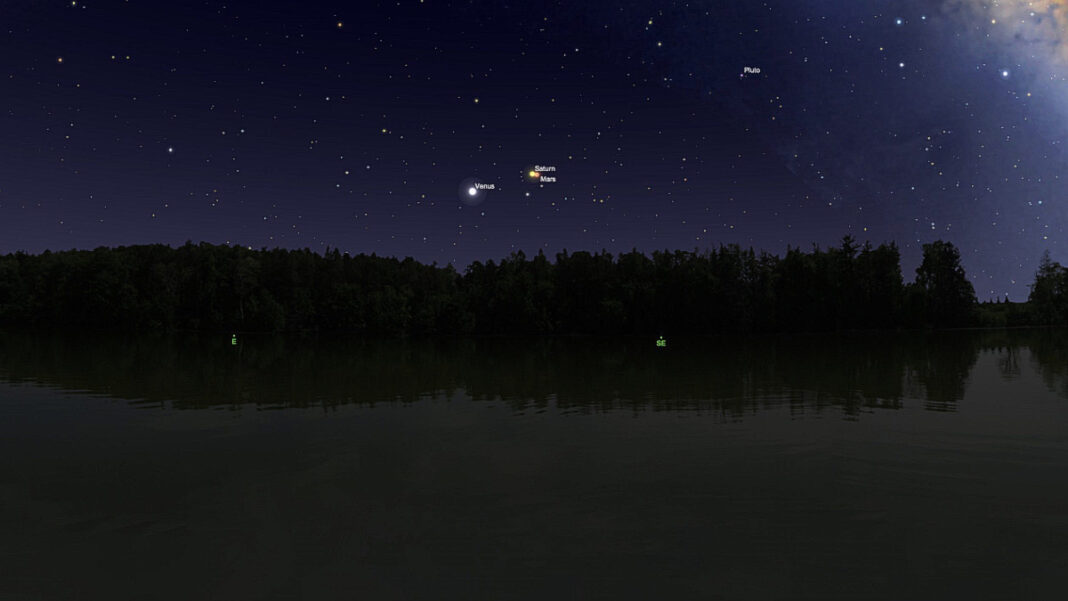INDIA: Today, all nightgazers must watch the night sky as Jupiter and Venus will meet in a rare conjunction.
When Jupiter and Venus are in conjunction, their separation will be “smaller than the breadth of a pinky finger.” Although the absolute distance between them is around 631,581,000 km, the four brightest moons of Jupiter will also be visible, according to multiple sources.
Jupiter and Venus were in a linear path with the moon in February. The conjunction of the planets happens frequently in the solar system because they “follow similar trajectories across our sky because they orbit around the Sun in about the same plane, the ecliptic plane,” according to NASA.
The dazzling incident in the sky after sunset can be seen by all earthlings. The conjunction will be visible with the unaided eye under clear skies, but a telescope or pair of binoculars can improve the view.
Venus and Jupiter will be in conjunction on March 1-2. The conjunction will begin around 5 p.m. according to Indian time. During the conjunction, Venus will be 0.5 degrees closer to Jupiter than usual.
Another intriguing celestial event will take place separately in the first week of March. The brightest star in the constellation of Leo, Regulus, will be seen near the 98%-lit gibbous moon on March 5.
Regulus, also known as Alpha Leonis, can be found at the bottom of a star pattern that resembles a backward question mark on star maps. Regulus is the twenty-first brightest star in our sky. Although it appears to be just one star, it actually contains four.
Additionally, the moon and Mars will be visible side by side on Monday, March 27, and Tuesday, March 28, continuing the astronomical display.
Observers can quickly locate the constellation Orion, which will start to show in the evening near the planets in the western sky.
Also Read: NASA Nominates First Woman for the Position of Science Chief



